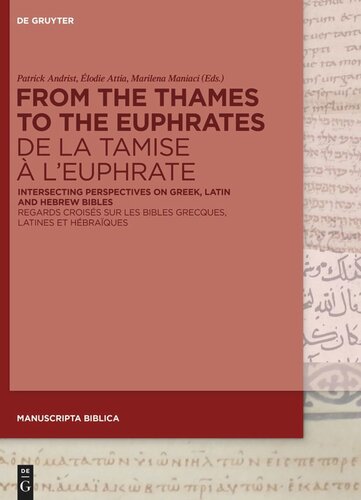

Most ebook files are in PDF format, so you can easily read them using various software such as Foxit Reader or directly on the Google Chrome browser.
Some ebook files are released by publishers in other formats such as .awz, .mobi, .epub, .fb2, etc. You may need to install specific software to read these formats on mobile/PC, such as Calibre.
Please read the tutorial at this link: https://ebookbell.com/faq
We offer FREE conversion to the popular formats you request; however, this may take some time. Therefore, right after payment, please email us, and we will try to provide the service as quickly as possible.
For some exceptional file formats or broken links (if any), please refrain from opening any disputes. Instead, email us first, and we will try to assist within a maximum of 6 hours.
EbookBell Team

4.7
106 reviewsThis volume is the result of a symposium organised in 2018 by Élodie Attia in Aix-en-Provence and offers a cross-sectional view of the production of typologically similar Latin, Greek and Hebrew Bibles during the course of the Middle Ages.
It first explores the different ways in which complete Bibles, in one or more volumes from the same production (pandects), were produced in different places and at different times, with an emphasis on their structural complexity. Complete Bibles are rare in all the traditions considered but especially interesting given the technical challenges that their production posed for craftsmen.
Partial Bibles represent a different way of transmitting the biblical text, whether they consist of a choice of parts of the Bible, assembled and reassembled in more or less original ways, or in the design of new types (such as the "Pentateuch-Megillot-Haftarot", produced in the Ashkenazi world before 1300).
Bibles with commentaries are a very varied category, illustrated here by two examples: first, the pandects produced by Theodulf († 821), in which the marginal notes are akin to a critical apparatus; second, Hebrew manuscripts containing systematic exegetical commentaries in sophisticated layouts that also vary according to their areas of production.
Finally, the presentation of new fragments of a very ancient scroll of Genesis and Exodus from the Cairo Genizah sheds new light on its insertion into the Masoretic tradition, and to document the existence of partial Bibles in the form of scrolls.
This volume shows the value of a comparative approach to ancient Bibles and hopefully represents a further step towards a more comprehensive perception of a history of the Bible.